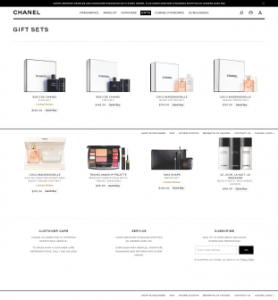
How confident are you that email marketing is working for your business?
While there can be no doubt that email marketing is one of the most powerful marketing channels around, without clear email marketing benchmarks you may not feel as confident as you’d like.
Let’s look at two important steps for creating clear email marketing benchmarks that map to your business goals:
Step 1: Determine the metrics that matter
To understand which metrics matter to your business, you sometimes have to work backwards.
Your process could look something like this:
Business goal >> Objective >> Strategy >> Metric(s)
Let’s use Robert Paul Properties as an example. This real estate firm has sent weekly emails to their audience for over seven years to drive website traffic and, ultimately, property sales.
Their approach can be mapped out like this:
Business goal: Sell more properties.
Objectives: Increase traffic to property listings on Robert Paul Properties website.
Strategy: Preview new listings in a regular email update and link to business website.
Metric(s): Email click-through rate.
For Robert Paul Properties, the click-through rate is the most important metric because it shows how many people are enticed by the email content and are clicking through to the website.
Determine what metrics are most important to you based on your business goal. Your key metrics might be event registrations, donations for a fundraiser, or new email list subscribers.
Step 2: Set specific email marketing benchmarks
Once you know which metrics to focus on, set specific values to work towards.
If you’re brand new to email marketing or don’t have a lot of existing campaigns to look back on, it’s beneficial to see how you compare to others in your industry.
Use this chart as a starting point to see how your metrics compare to others in your industry.
Even more important than industry averages are trends and results based on your own sending history.
Let’s go back to Robert Paul Properties for a moment.
While the average click-through rate for the Real Estate industry is just over seven percent, Robert Paul Properties was averaging over 16 percent.
Then they found a way to drive even more clicks:
“We recently started including the name of the town, a picture, and a short description of each property — but not the actual address,” says marketing technology manager, Autumn Boles. “We’re hoping they’ll click-through to find out where exactly it’s located.”
In just the last three months, the firm was able to increase their click-through rate by over seven percent:

Take a look at your emails that have performed best in the past. Use these as a benchmark for your campaigns moving forward. You should always work towards meeting, and exceeding, your best results.
For example, if your open rate is typically around 17 percent, but you notice one email that exceeded 20 percent, work towards reaching that high point again. Take notice of emails that perform especially well and try to determine what caused the better result.
Keep tabs on specific values of important metrics so you can quickly tell if an email is above or below where you want to be.
Beat your benchmark
With a clear focus on the metrics that matter to your business and a specific value you’re working towards, you’ll be able to better articulate how your emails are performing.
Regularly update your benchmarks as you continue to make improvements and refine your strategy.
Have more questions about measuring the impact of your email marketing? Leave us a comment with your question.
Digital & Social Articles on Business 2 Community
(50)
Report Post






